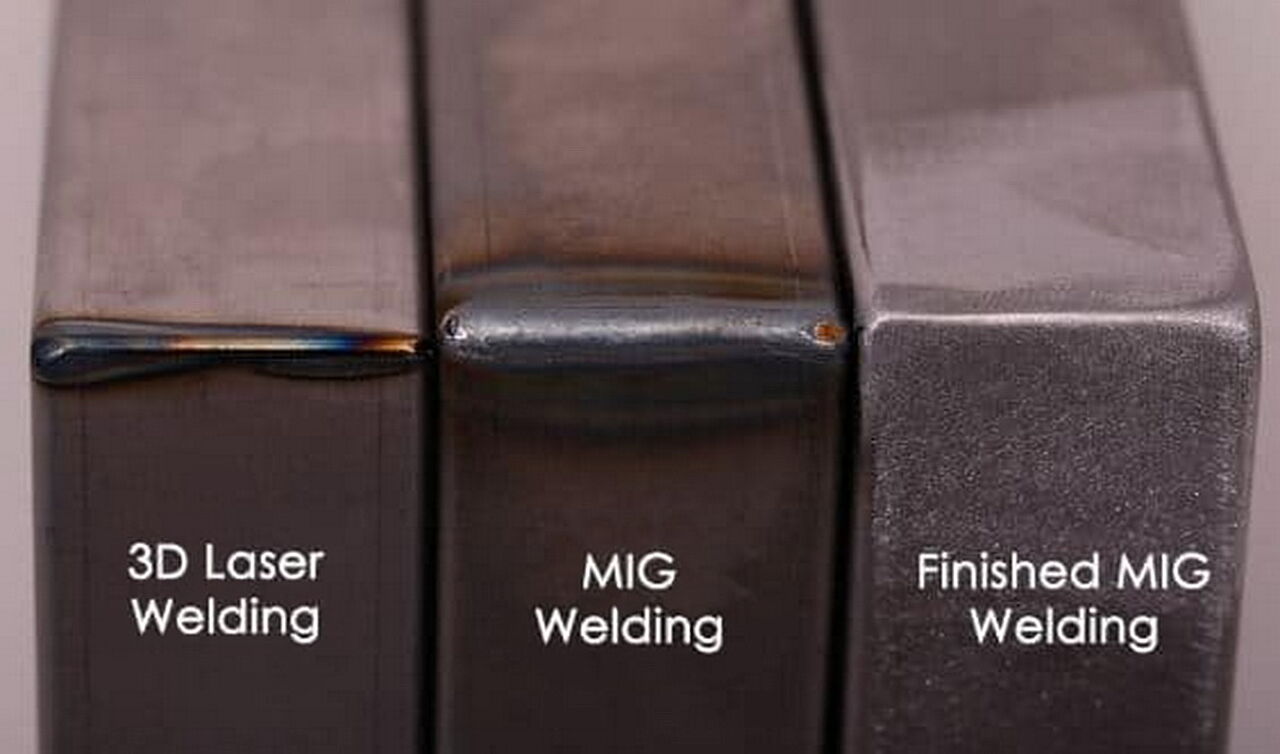Advantages of FIBER LASER welding
Short cycle times, high welding speed
Precise and high quality parts
Flexible integration and production
Low thermal deformation
Contact-free processing

Laser welding is one of the fastest welding techniques, with welding speeds of more than 150 millimetres per second.
Wobble welding creates very high quality parts with low demanding preparations.

Laser welding is a non-contact process that allows metal parts to be assembled mainly by means of a laser beam.
This type of welding is suitable for applications that require high speeds and for thin welding with low thermal distortion.
The speed of this process, as well as the ability to control the quality of welding during the operation and its high level of automation, make laser welding a widely used method in many industrial sectors such as the medical industry, electronics, tool making and the automotive sector.
Wobble Laser Welding Machines
Handheld Fiber Laser Welding Machine
A Handheld Fiber Laser Welding Machine is a new type high-power, high-end continuous welding tool which adopts a high-quality fiber laser source to produce a fiber optic beam. After transmission processing, the light is focused on the workpiece to achieve continuous welding. It avoids the two thresholds of thermal strain and post-treatment, and is environmentally friendly and pollution-free, greatly improving the joint strength and quality of welding.
Replacing the previously fixed light path with a hand-held type not only facilitates the welding of molds, advertising characters, kitchen utensils, doors and windows, etc., but also makes laser welding possible in outdoor operations, which indicates that the traditional welding of electric welding, argon arc welding, etc. will be replaced by laser welding.
Click Here to visit our Fiber laser Welding Website
Best Handheld fiber laser machine in the market here available
Why choose a laser welding machine?
Laser welding machines have several advantages:
- They are very fast:
- The laser allows the metal to be heated extremely quickly, while limiting the risk of deformation.
- This technology is particularly effective for welding large quantities of sheet metal and is therefore widely used in the automotive industry.
- They are also highly accurate:
- They allow a localized, very fine, very clean, almost invisible welding.
- They are particularly suitable for welding small parts.
- This type of welding is very popular in the dental and jewellery industries as it provides the most aesthetic welding possible.
- It is also possible to split the laser beam into several beams to provide welding that is even more accurate.
- They can be adapted to a wide variety of part shapes and materials:
- Laser welding machines are mainly used to weld metals, including refractory metals.
- It is also possible to weld non-metallic parts with them, such as porcelain and glass.
- You can use them to weld parts with very different shapes.
- They do not wear out:
- Laser welding machines operate without contact, so there is no risk of wear and tear on the machine.
- There is also no need to change tools or electrodes, which is a definite advantage in terms of waste reduction.
- They can be given orders digitally:
- It is now possible to control the quality of the welding from a computer during the welding process.
- The high level of automation allowed by such a process also makes it possible to detect and solve any quality problems.
However, it should be noted that laser welding machines also have certain disadvantages:
- The costs of installing laser equipment are still very high.
- This technology requires high assembly accuracy during processing to avoid laser beam deflections on the parts.
- The laser weld is thinner than that obtained with electron beams, making the process unsuitable for welding high reflective metal.

